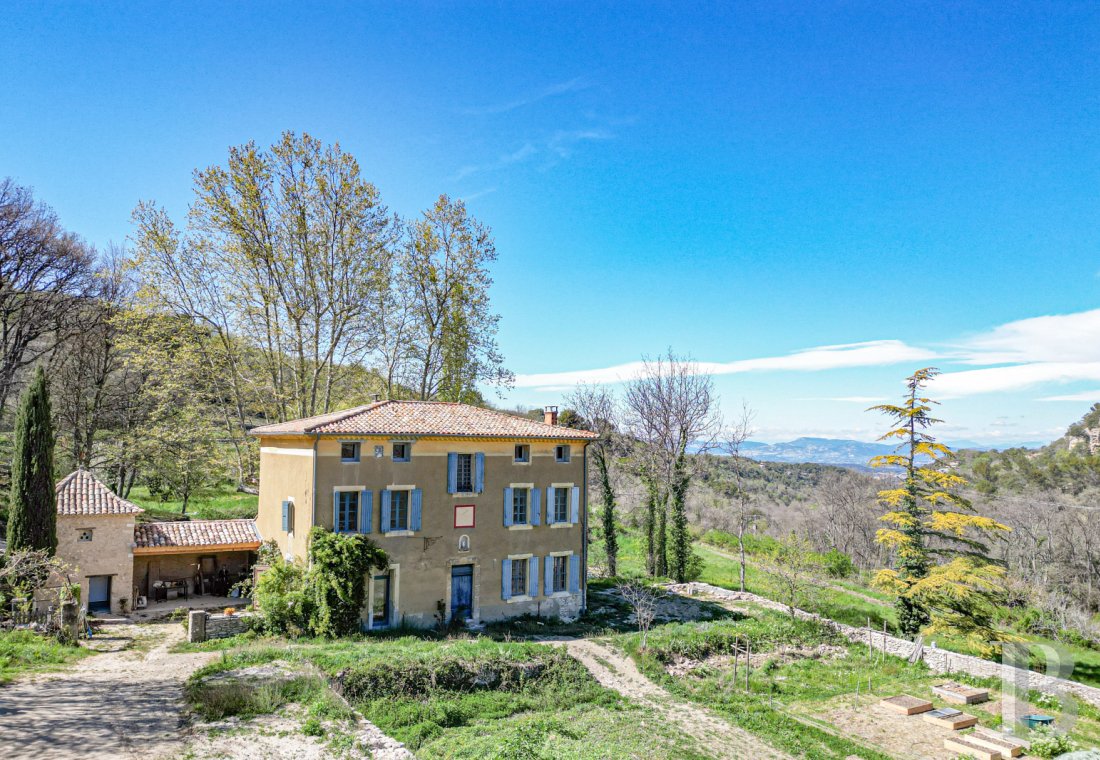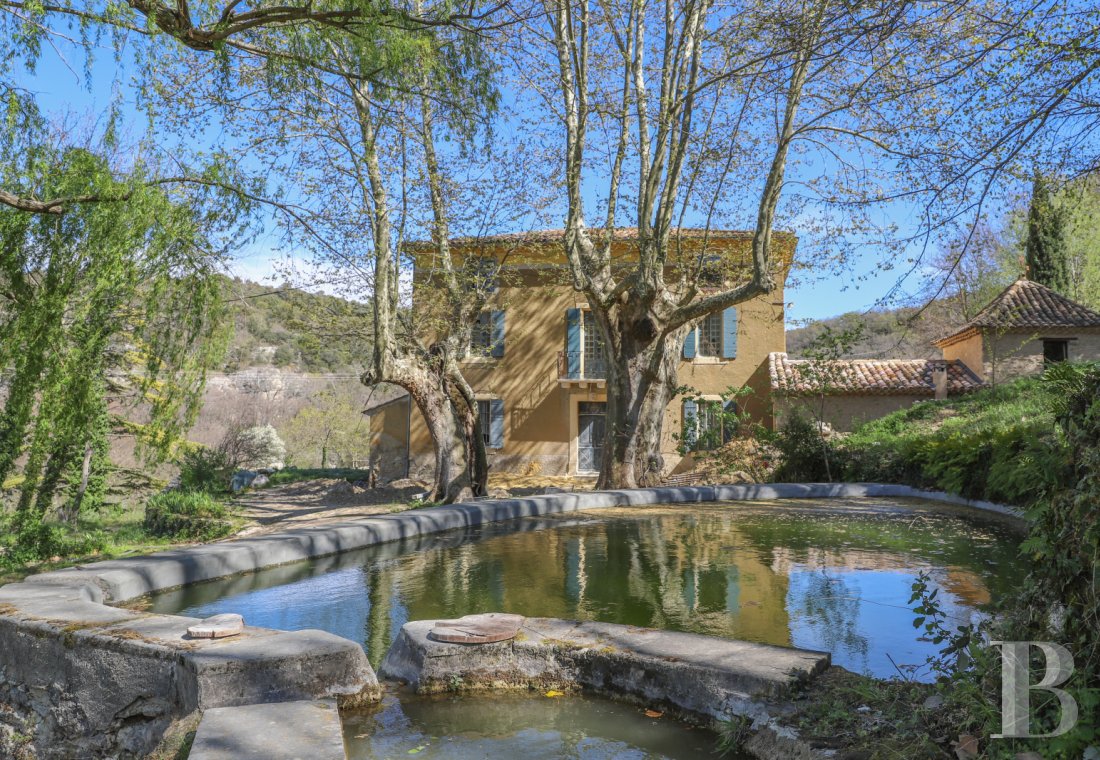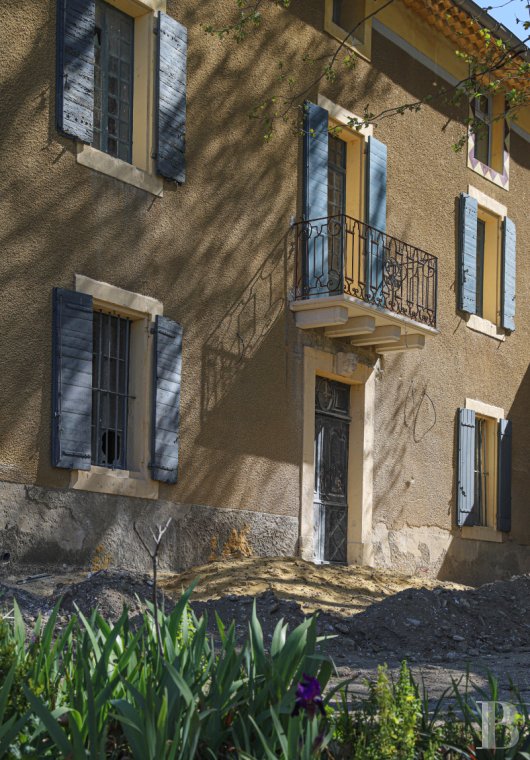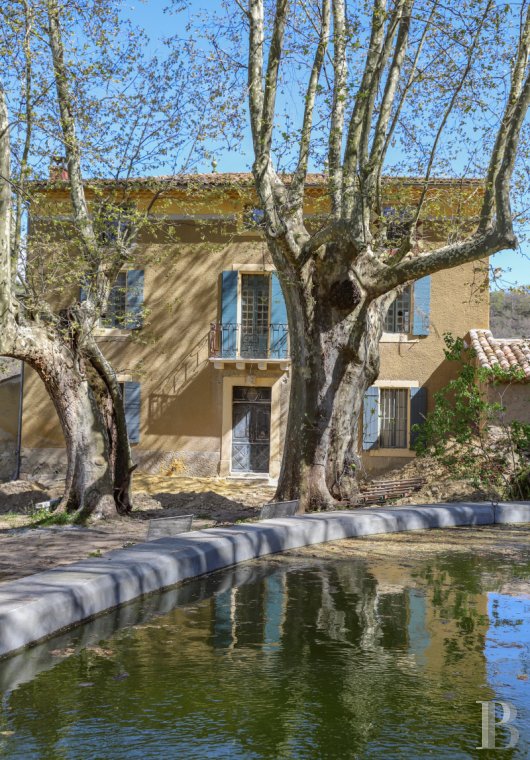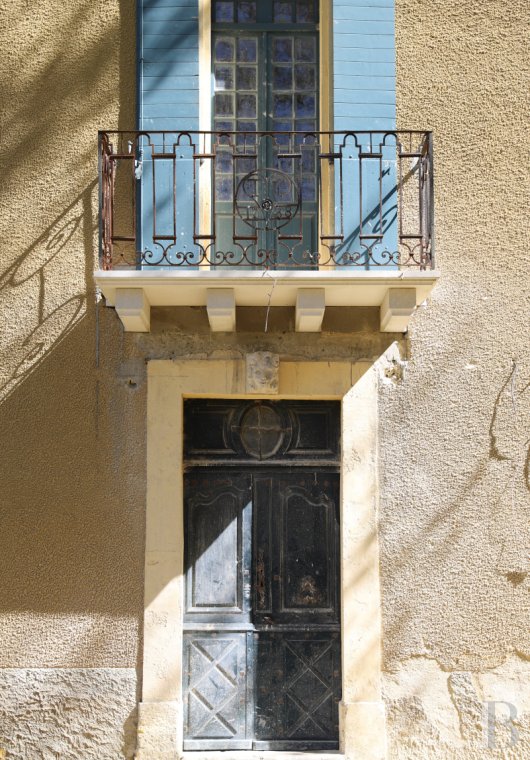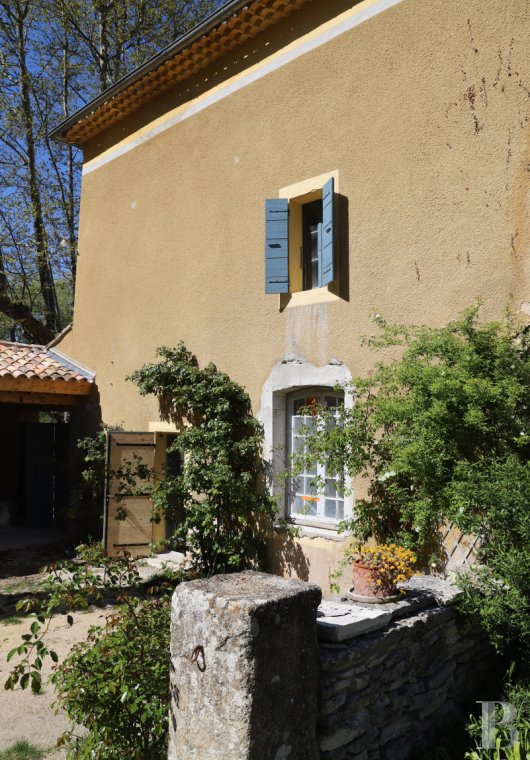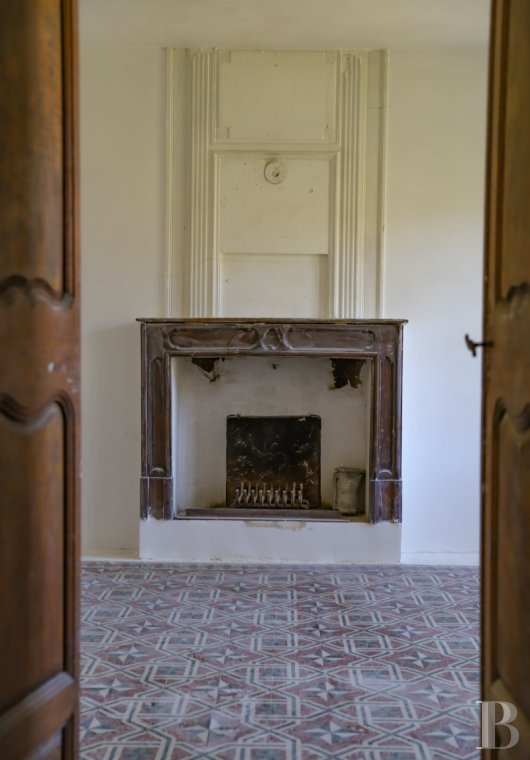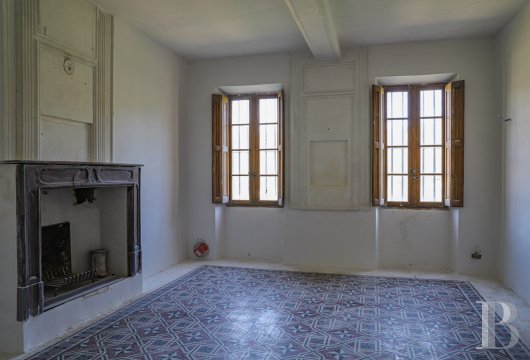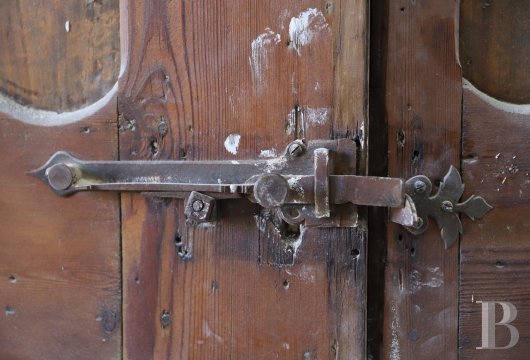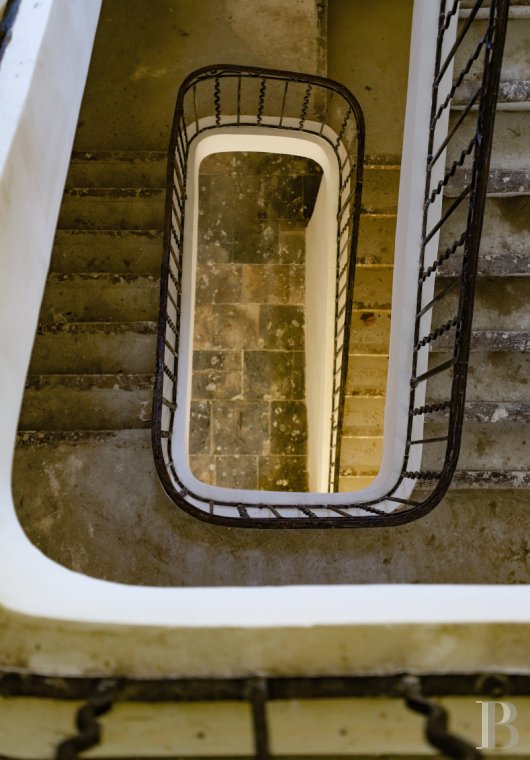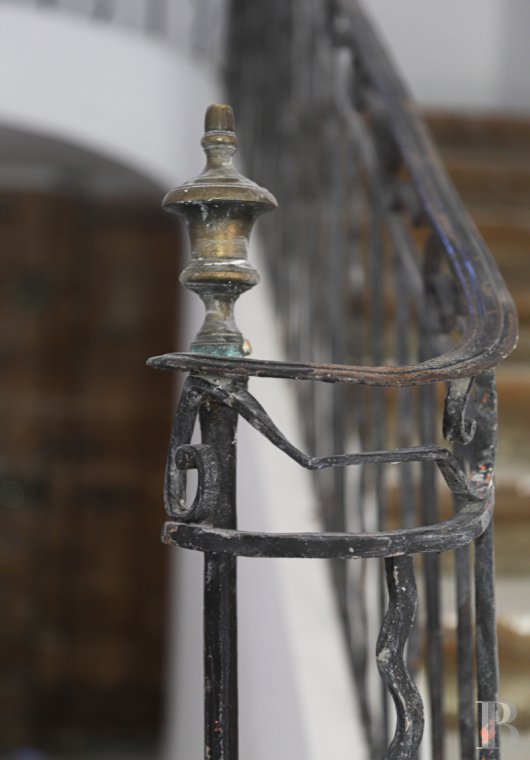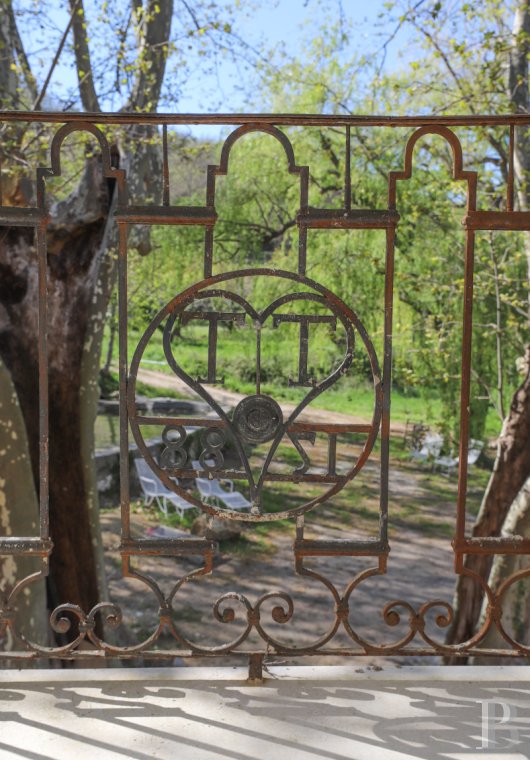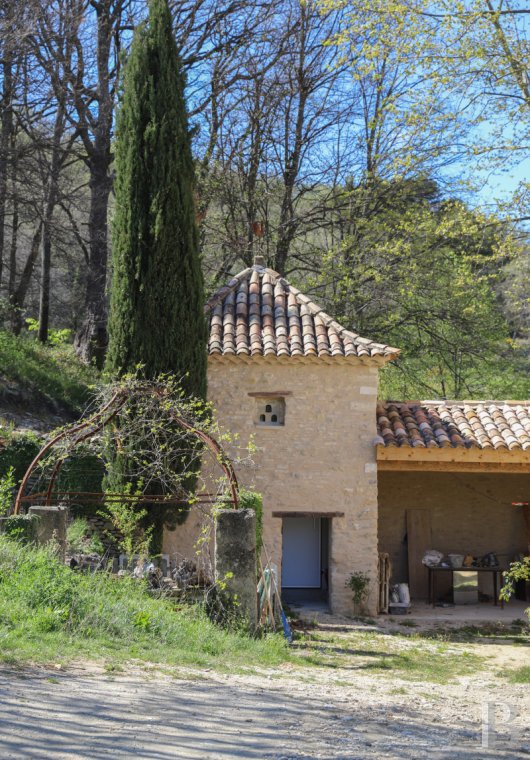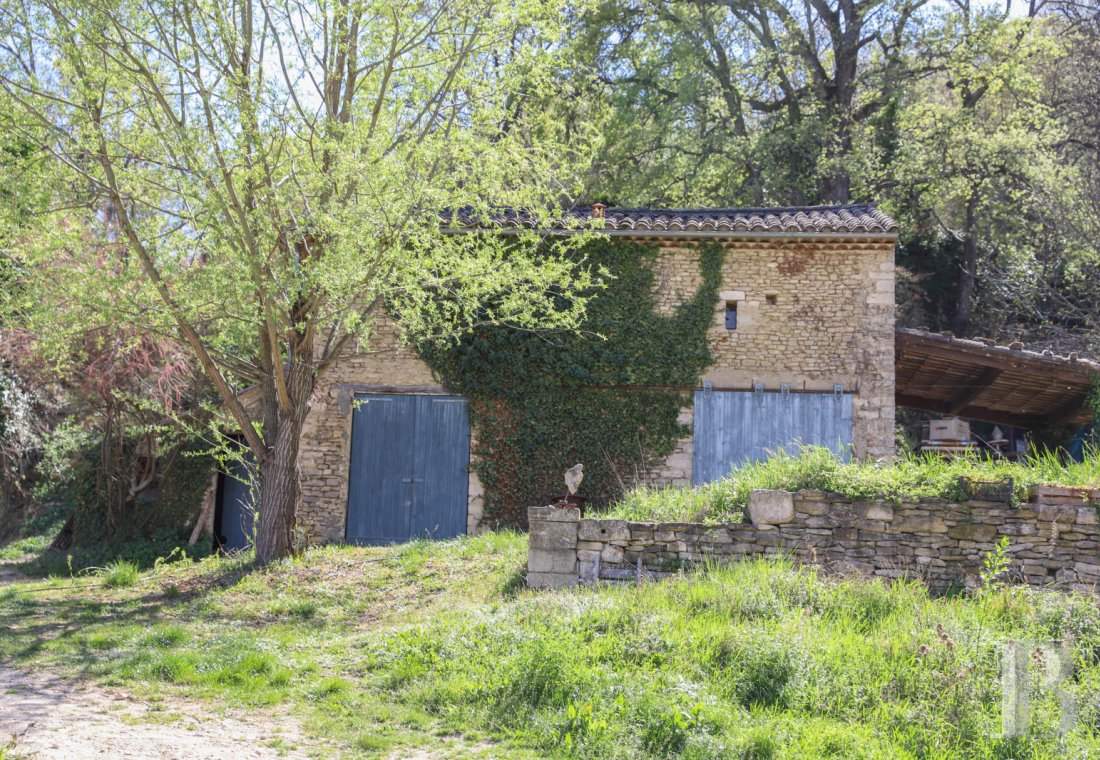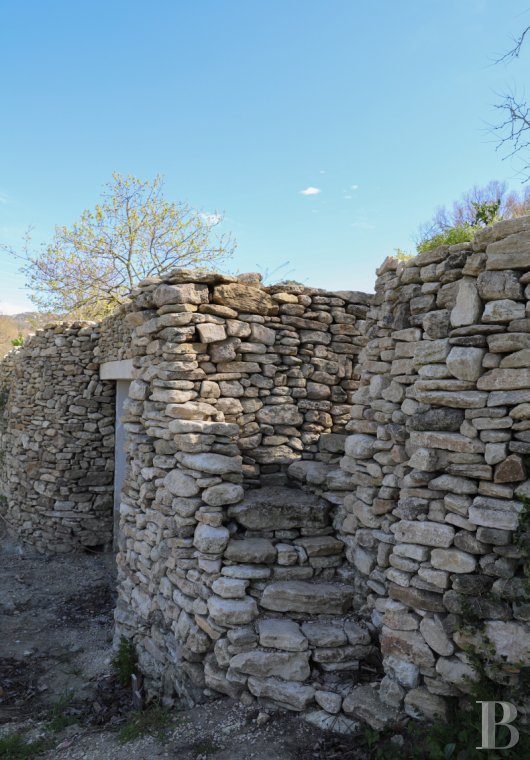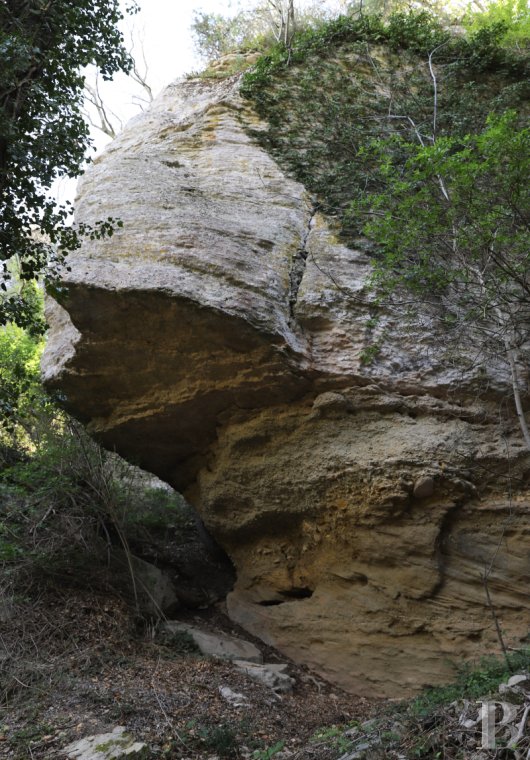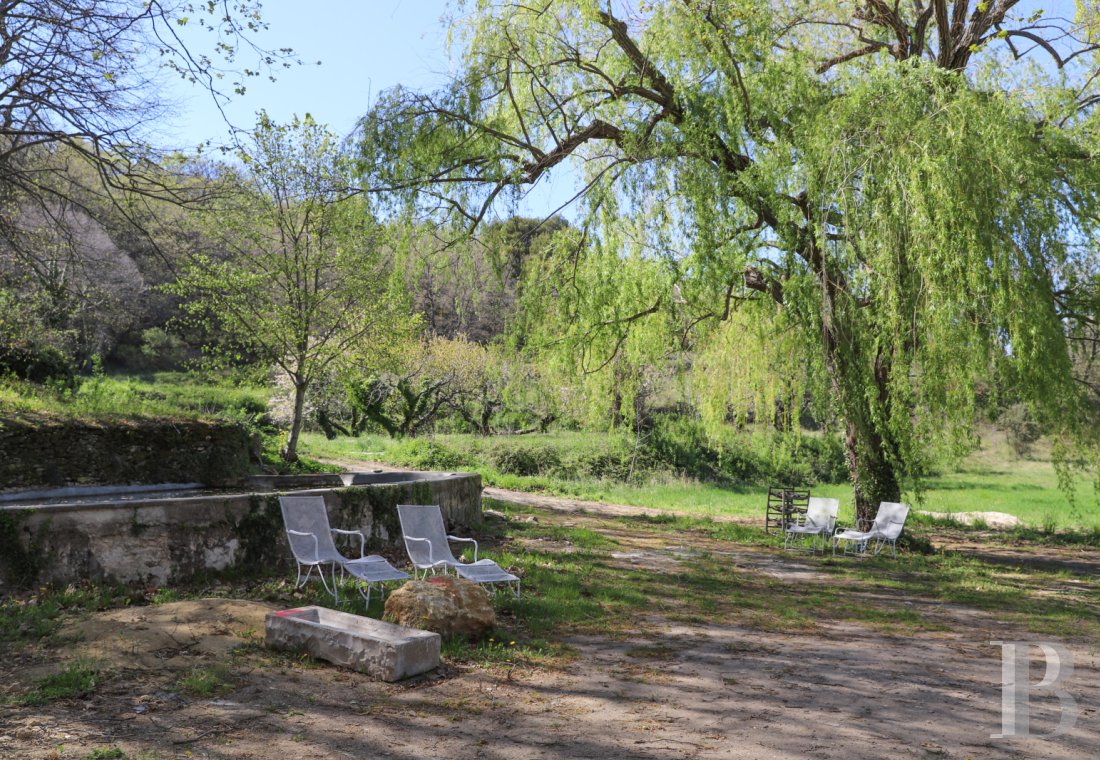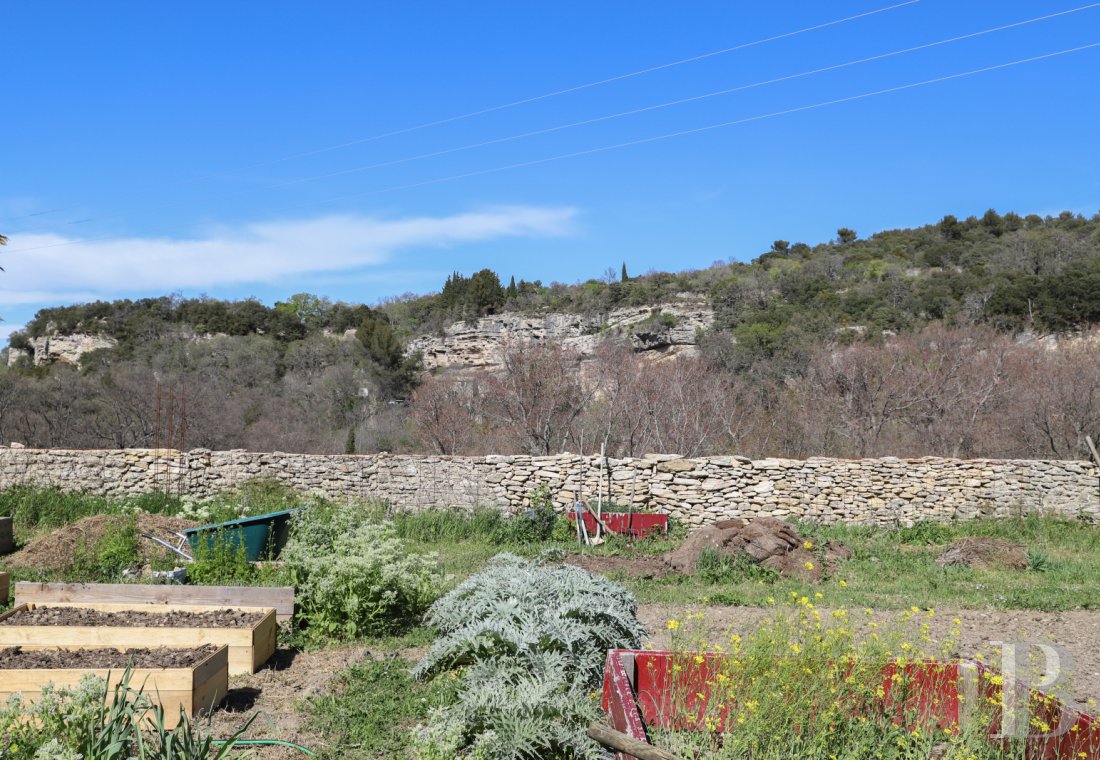outbuildings, ponds and springs in the Vaucluse mountains

Location
The property is set in the Vaucluse mountains, between the Luberon and Mont Ventoux, on the outskirts of a renowned village built on a rock: a picturesque site dominated by its castle since the 11th century and admirably restored with its cobblestone streets and fountains. All around, in the gently rolling Provence Alps, hilltop villages compete with outstanding natural sites.
The estate can be reached from a road that winds through the Vaucluse mountains towards Saumane. It stretches from east to west, in the heart of an unspoilt natural landscape forming a secluded valley.
All shops and services are within easy reach in the village, 1.5 km from the property. Avignon, with its TGV train station and airport, is 40 minutes away, and the main motorway junctions 20 minutes.
Description
The estate is located on a site with an average altitude of 320 m, with the buildings erected halfway up the slope, where the valley widens and the springs gush forth from the rocks. A former hunting lodge built in 1788 is extended to the south and east by an old walled enclosure with a dovecote tower in the south-west corner.
The entrance courtyard of the lodge is shaded by centuries-old plane trees, drawing their strength from one of the property's three springs. This forms a first pool in this spot, resembling a water mirror reflecting the western elevation. The grounds stretch as far as the eye can see to the east, made up of two open terraces that follow the natural slope of the land and disappear into the meadow at the bottom of the valley.
Several outbuildings - a caretaker's cottage, sheds and a hangar - are partially sheltered by trees. Slightly set back from the hunting lodge, they lean against the neighbouring rocky outcrops.
The various stone buildings have oblong windows of varying sizes, and their two- or four-pitched roofs feature monk-and-nun tiles.
The former hunting lodge
A rectangular building with a four-pitched roof, the hunting lodge is three storeys high, with ochre-coloured rendered facades and symmetrically arranged windows flanked by blue-painted shutters on the east and west sides. To the east, a statue of the Virgin Mary nests in a recess above the door opening onto the future orchard and current vegetable plot. To the west, a balcony accessed from the bedroom on the first floor overlooks the valley.
The main structural work and part of the finishing have been completed, enabling the future owners to continue the impressive renovation work that has recently begun.
The ground floor
The entrance to the lodge leads into a hall with period wooden doors and windows facing east and west. From the centre of this hall, a rather impressive winding stairway - typical of a place of pageantry, with a period wrought iron balustrade - leads to the two upper levels and the living rooms on the ground floor. To the right is a kitchen with French doors providing access to the orchard to the east and to the old walled garden to the south. To the left, a double door separates the two sitting rooms with their inset fireplaces, one of carved wood and the other of stone featuring the date of construction. A stone floor and coffered ceiling adorn the first sitting room, which overlooks the valley to the west. In the second sitting room, the floor is laid with old cement tiles, the ceilings are moulded and two openings face the newly-created orchard and vegetable plot. A wooden door leads to the entrance hall.
The first floor
A landing leads on either side to a library with windows facing three points of the compass and a suite comprising a bedroom, a bathroom and a closet. The closet and bedroom face west, and a balcony with iron guardrails overlooks the valley. The three tall bathroom windows let the light pour in. The floor has been screeded, leaving the choice of finish open.
The second floor
A corridor leads to four sleeping areas: on the right, two bedrooms share a central shower room and separate lavatory; on the left, a dormitory has been designed for up to six people. The last west-facing bedroom on this level is concealed by its closet. These different spaces share a second east-facing bathroom. The floor and wall coverings will need to be added.
The cellar
Set against the rock on which the house rests, a cellar is accessed via a staircase built into the dry stone wall on the north side of the house. Fitted with an old stone sink, it will serve as a laundry room and technical area for the house.
The old walled courtyard and its dovecote tower
The old open enclosure is located to the south of the lodge; paved with roughly 80 m² of cobblestones, it features a metal gazebo with pillars of ancient monolithic stone blocks. A summer kitchen under a gable roof, equipped with a bread oven, links the kitchen of the lodge to a two-storey, four-pitched dovecote. The dovecote has a lower level that today houses a cold storage room set against the rock; the upper level, accessed by a staircase from the west entrance, would be ideal for a workshop or study, for instance.
The caretaker’s cottage
This two-storey stone building to the south of the lodge has a gable roof of monk-and-nun tiles edged by a typical two-row cornice.
The ground floor
A garage and a storeroom can be accessed from the northern part of the building through a large sliding door and a double door, both of blue painted wood. An awning backs onto the western facade and a cellar can be accessed from the east.
The first floor
This level is accessed via a south-facing terrace overlooking the forest and its monoliths. It comprises a kitchen, a living room facing south and east, and a bedroom with a shower room to the north.
The terraced grounds
Two "restanques", dry stone walls typical of the region, mark the boundaries of the "vegetable plot landscaping project" as it was designed by the current inhabitants for the development of the eastern perimeter of the lodge. The first terraced area could be levelled to create a cobbled terrace bordering the lodge on three sides. The green area of around 1,600 m² that extends eastwards could easily be imagined as relatively open, as it is at present, but laid out in clearly delineated vegetable and fruit growing areas. At the junction between the two levels of the grounds, a mirror pool would be fed by rainwater running down from the buildings and by the springs on the estate. A flight of steps in line with the door of the house would provide a pedestrian link between the terrace and the landscaped vegetable plot.
The land, orchards, meadows and woods
The surrounding 16 ha of grounds are made up of orchards, meadows and woods. Meadows stretch as far as the eye can see to the east of the lodge, covering an area of around 3 ha. Some of the plots are classified as "organic”and hold the Ecocert label. They are supposed to be farmed in an environmentally-friendly manner.
Truffle oaks and old vines still standing promise good harvests. To the north of the lodge, a number of cherry, almond and plum orchards need to be nursed back to life, so as to bring back the first stirrings of spring.
A lush forest of oak, pine, beech, hazel, willow, chestnut, plane and hackberry trees surrounds the lodge. To the south, a fern-lined path leads up to the foot of a rock face, with its summit dominating the valley and offering views of Mont Ventoux. An olive grove, currently about twenty feet high, could also be brought back to life and produce a virgin oil much appreciated by the inhabitants.
Our opinion
Set in the middle of its grounds, the former hunting lodge and its outbuildings seem to be cut off from the rest of the world. A true oasis in the Vaucluse, where water, earth, forest and fields are all combined in a precious alchemy, giving the mind and body a concentrate of tranquillity and rest. To live in the valley is to keep writing a history that goes back thousands of years: that of a drop of water on a limestone rock, a sign that life could be blessed in this spot. It is hardly surprising that fossils and pottery from the past can be found beneath this soil. The ancient dry-stone terraces that make up the grounds of this vast estate bear witness to the presence of the ancestors and the power of a land that is full of promise and riches.
1 970 000 €
Fees at the Vendor’s expense
Reference 554076
| Land registry surface area | 16 ha 54 a 45 ca |
| Main building surface area | 315 m2 |
| Number of bedrooms | 6 |
| Outbuilding surface area | 50 m2 |
| including refurbished area | 50 m2 |
NB: The above information is not only the result of our visit to the property; it is also based on information provided by the current owner. It is by no means comprehensive or strictly accurate especially where surface areas and construction dates are concerned. We cannot, therefore, be held liable for any misrepresentation.

